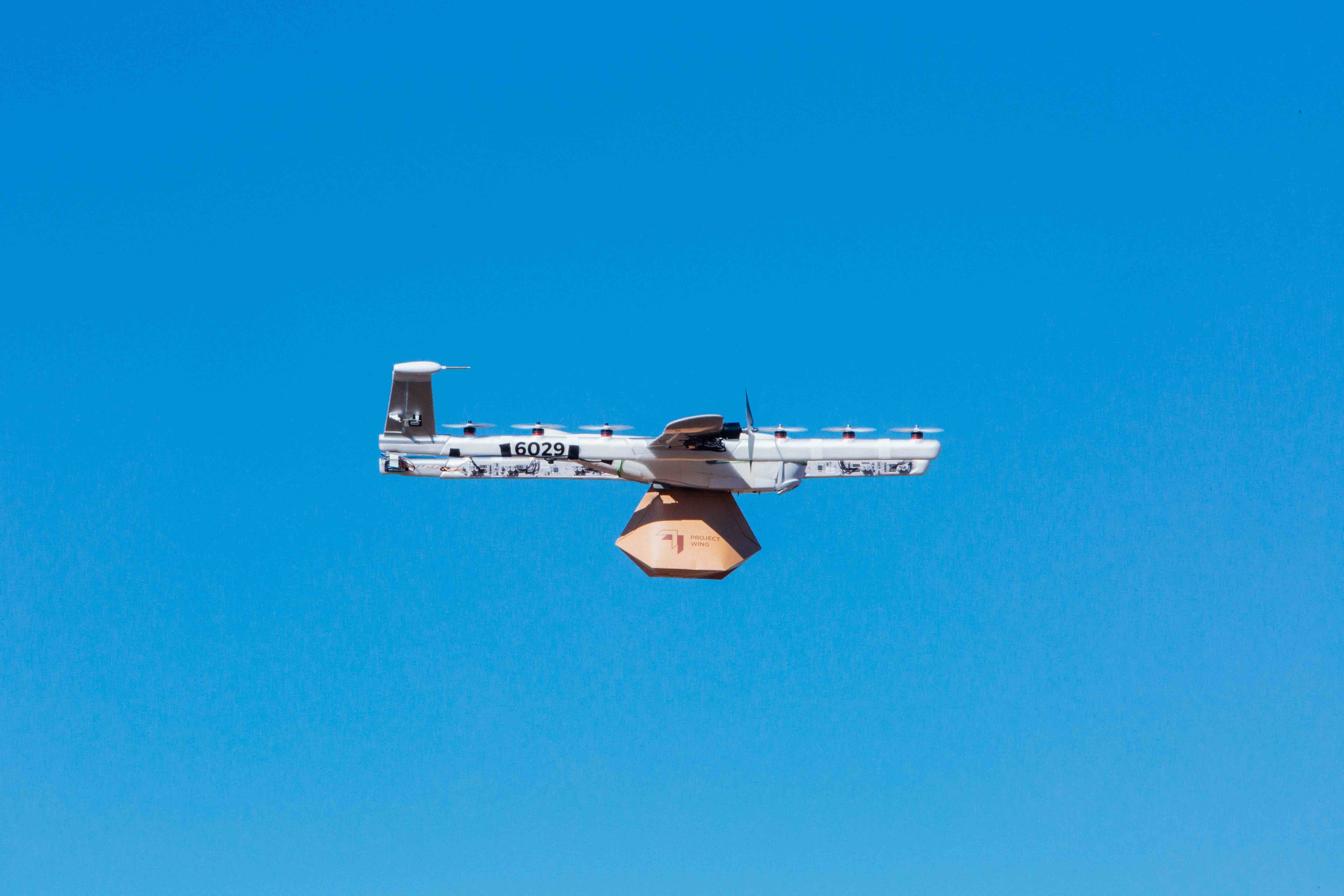
Photo courtesy of Wing.
The Google-affiliated company Wing will soon begin working with communities in Southwest Virginia to hammer out the details of a drone delivery service set to start trials later this year. Clearing the way is a freshly granted Air Carrier Certification of Wing’s from the Federal Aviation Administration (FAA), which permits Wings’ unmanned aircraft system (UAS) to operate without some of the restrictions imposed on uncertified unmanned aircraft.
Wing is part of Alphabet, a holding company that comprises Google and several former Google subsidiaries. The firm has been working for several years to win certification, submitting evidence to the FAA that its proposed operations would be safe. These submissions included data showing a delivery by Wing carries a lower risk to pedestrians than making the same trip made by car.
“This is an important step forward for the safe testing and integration of drones into our economy,” said Secretary of Transportation Elaine Chao in a statement. “Safety continues to be our number one priority as this technology continues to develop and realize its full potential.”
The certification, which incorporates rules for Wing for flights over people, will allow the company to carry cargo for pay in the United States. Wing drones have already flown more than 70,000 test flights and made more than 3,000 deliveries to doorsteps, driveways and backyards of customers in Australia. In addition the firm is now poised to begin deliveries to homes in Helsinki, Finland, as part of its first European trial.
The fixed-wing drone the company is using incorporates 12 vertical-lift rotors plus two rotors for forward propulsion and has a 2.7-pound payload capacity. Operations will typically take place at altitudes between 65 and 100 feet—too low to interfere with manned aircraft but high enough to avoid most terrestrial obstacles like power lines.
To enable flights beyond the line of sight of the drone operator the firm plans to incorporate Automatic Dependent Surveillance—Broadcast (ADS–B). This technology—which must be carried onboard manned aircraft as of January 1, 2020—uses satellite navigation to determine the aircraft’s position. That position is then broadcast to other aircraft in the area and to air traffic control systems.
“We are working to incorporate onboard ADS-B based avoidance in our operations, and are using ground-based ADS-B receivers to gather data for on-board ADS-B based avoidance,” said a Wing spokesman. “As part of the IPP, we’re planning on gathering data to support the use of ADS-B as a primary means of detection and avoidance in the areas of Wing’s operations.”
Wing plans to engage in extensive outreach with local air carriers, emergency helicopter operations, flight schools, and other region-specific operations before conducting flights. The company will also be continually monitoring local airspace through mechanisms like radio frequencies and displays of regional air traffic and can land its drones if necessary, said the spokesman in a written response.
Wing is a member of the Integration Pilot Program (IPP) team based at Virginia Polytechnic Institute and State University (Virginia Tech) in Blacksburg, Virginia, and will be working with them on the delivery trials. The IPP team will also gather data to support the use of ADS-B as a primary means of detecting and avoiding other aircraft in the areas where Wing is operating.
The Department of Transportation created the IPP program to prototype and do real-world tests of new applications. The 10 participating teams work closely with their local communities to integrate drone services in a way the public finds workable and acceptable. What the teams learn through that effort, and the operational data they gather, is then submitted to the FAA to help officials craft broad rules supporting the integration of drones into the national airspace system.






